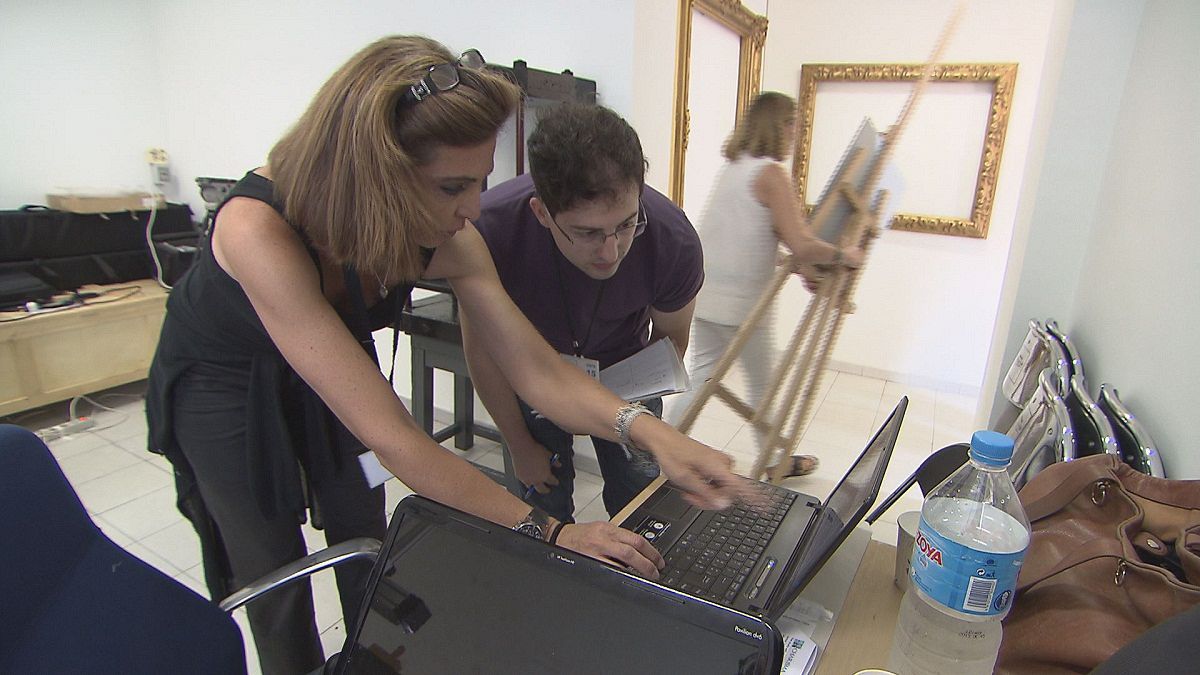What does an early Picasso self-portrait have in common with a 3,000-year-old Egyptian lapis-lazuli beetle?
They are both under close examination using complex and advanced research techniques.
The Picasso self-portrait is under scrutiny using research instruments not belonging to the museum: the instruments come from all over Europe.
That is very good news for the museum’s conservators.
Reyes Jiménez, the Conservator at the Picasso Museum in Barcelona told euronews why.
“Our museum does not have a scientific lab. So when we need to research something, we try to bring a lab to our facilities. We work in partnership with public universities and private companies using different analysis techniques. But this time is even more special. A mobile lab allows us to pack everything we need to research into just one week, using four or five different techniques. And that is a great advantage because it allows us to learn a lot more about certain paintings in just one intensive week of research,” she said.
The mobile lab is part of a European research project. It gives art experts and conservators the latest technology to reveal the inner secrets of works of art. This ensures they are properly restored and protected.
Brunetto Giovanni Brunetti, a chemist at the University of Perugia and Charisma project coordinator explained to euronews how the technology helps artists: “New advanced technology allows us to dig really deep into the nature of art objects. We can understand its structure, the evolution of the creative process used by the artist. We can also get new information about when the work of art was created. And all this with an accuracy we couldn’t even begin to imagine before now.”
Fixed research facilities are often too big to relocate. When they are, it is up to the art to go on the move.
Euronews visited a cultural heritage research centre in Paris where Italian researchers have brought examples of fine Egyptian craftsmanship 3,000 years old.
They want to know where the lapis-lazuli used to make specific ornaments comes from, and better understand commercial patterns used 30 centuries ago.
They simply cannot get their questions answered working in isolation in their small national laboratories.
Alessandro Re, Physicist, University of Torino, explained how they work in cooperation with other researchers: “We are physicists specialising in Cultural heritage. Thanks to this research platform, we can come here to meet archaeologists and geologists. We sit around a table and discuss things. Everyone brings data from their own field of research and together we come up with new clues to solve scientific issues. In this case, we’re trying to work out where this lapis-lazuli comes from.”
The objects are placed on an unique particle accelerator, devoted exclusively to the study of works of art.
The French hosts need to make sure everything is ready for their European colleagues.
Claire Pacheco, Archaeological scientist, C2RMF, emphasised the importance of host institutions getting everything right: “Hosting European researchers means that they travel here with their works of art. Sometimes the transportation prices and cost of insurance are breathtaking. So we, as host institutions, can’t let anything go wrong. We can’t afford to start organising such a huge effort and not deliver because of a technical failure.”
Apart from fixed and mobile research facilities, this common effort gives art experts valuable access to a huge database system on thousands of works of art throughout Europe.




